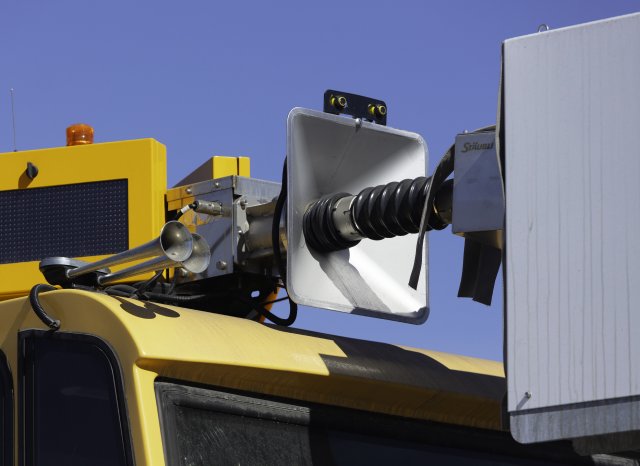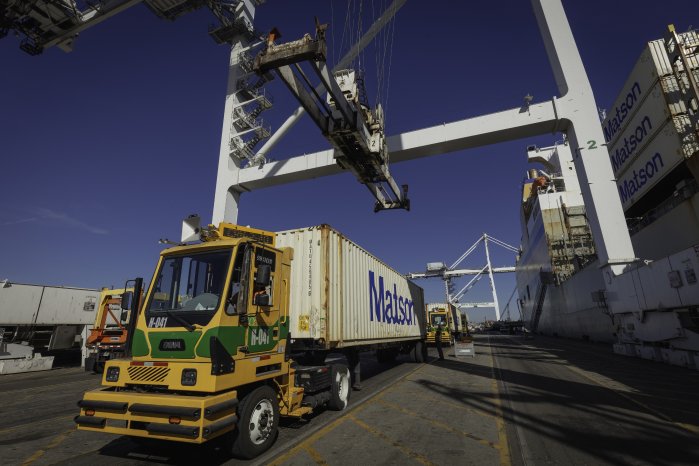The project with SSA Terminals is part of a $50 million Port of Long Beach grant obtained from the California Air Resources Board’s (CARB) Zero and Near Zero Emission Freight Facility (ZANZEFF) program. ZANZEFF funds transformative emissions reduction strategies at freight facilities throughout the state and is part of California Climate Investments, a statewide program that puts billions of cap-and-trade dollars to work reducing greenhouse gas emissions, strengthening the economy and improving public health and the environment— particularly in disadvantaged communities.
For this project, 33 tractors designed to transport shipping containers around the terminal were built with an EV powertrain. SSA Terminals, which manages the port terminal, chose Australian firm Tritium to install 175kW DC High Power Chargers to power the tractors; and Stäubli to install its QCC solution for automated, rapid charging.
Benefits to California and its Ports
Stäubli’s QCC system uses an enclosed pin-and-socket design that is self-cleaning, touch-protected on both sides of the connector and easily corrects for misalignment. At the Port of Long Beach, the 33 QCC systems automatically connect Tritium’s chargers to an electric receptacle on each terminal tractor, creating a safe, efficient, charging system. Here are a few highlights of this technology solution:
- Zero-touch operation: All tractors can be charged simultaneously with no manual intervention. Operators simply pull into a charging station and the QCC deploys to plug in the tractors during breaks or shift changes for maximum charging uptime, and labor utilization.
- Environmentally hardened: Each QCC is power-rated in excess of one megawatt and features UL-rated components that withstand contaminants that typically foul port equipment including salt air, high humidity, and airborne rust and rubber.
- Low/no maintenance: The QCC system is rated up to 100,000 mating/plug-in cycles, and requires little to no maintenance for an expected 20 to 30-year service life.
- Cleaner air quality: This project contributes to meeting the emission reduction strategies of the joint Port of Long Beach and Port of Los Angeles Clean Air Action Plan, which has a goal to achieve 100 percent zero emission terminal operations by 2030.
David Rababy – Head of Sales E-Mobility North America.
This project with Stäubli is another step in SSA Terminals’ path towards decarbonizing its operations, building upon the company’s long history of innovation in testing and deploying new technologies to reduce emissions at marine terminals.
About SSA Terminals / SSA Marine
SSA Terminals is a subsidiary of SSA Marine, one of the world’s leading independent, privately held marine terminal operators, with activities at more than 250 terminal facilities and rail operations throughout geographies in the U.S., Canada, Mexico, Central America, South America and Asia. Since its founding in 1949, SSA Marine has continued to grow, always focusing on its customers’ interests.
About The Port of Long Beach
The Port of Long Beach is one of the world’s premier seaports, a gateway for trans-Pacific trade and a trailblazer in goods movement and environmental stewardship. The Port handles trade valued at more than $200 billion annually and supports 2.6 million trade-related jobs across the nation, including 575,000 in Southern California.


